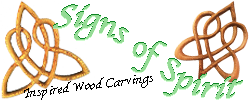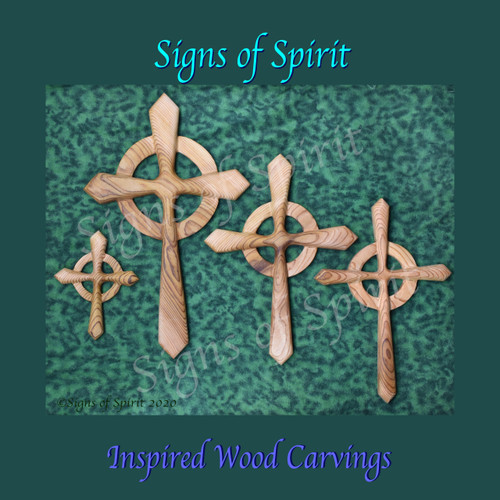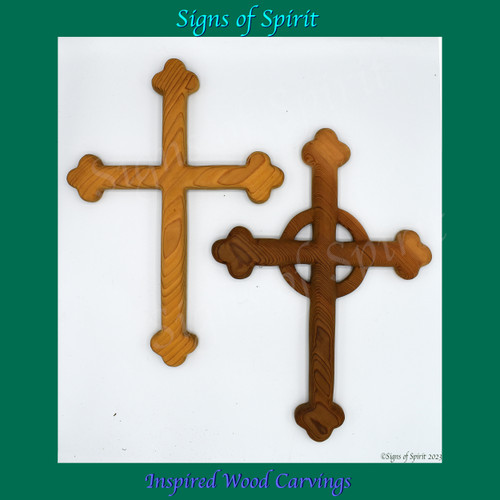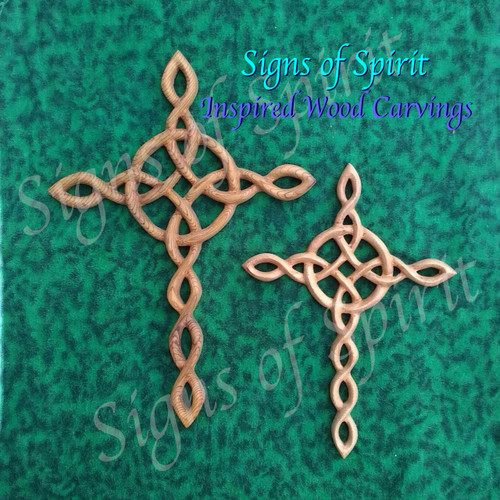MEANING: The Cross is among the oldest and most universal of symbols... The earliest Christians extended the bottom leg of the Celtic Wheel Cross to create the Celtic Cross. The circle woven around the vertical and horizontal members defines the Celtic Christian Cross.
The Passion Cross has sharpened points at the end of one or more of the cross members. It is also referred to as the Cross of Suffering representing the nails that Christ suffered at his Crucifixion. Passion, in this definition, comes from the Latin passio, which means suffering or enduring. The use was extended to the sufferings of Martyrs, and from there to strong emotion, and finally to today's popular use to describe a burning desire. The Passion Cross is named from the original meaning and refers to Christ's suffering on the cross – not just the obvious physical pain, nor from the mocking crowd, but the real and immeasurable suffering of paying for our sins.
The French word for 'sharpened' is aiguisé and in heraldry it is called the Cross Aiguisé or Pointed Cross.
In addition to heraldry, this cross is used as a typographical mark called the obelisk.
Alternative names for this cross are, Nail Cross and Disciple’s Cross, and as Jesus was a Carpenter, a Carpenter’s Cross.
This is a gift for anyone who collects crosses!
The back of the cross is keyholed for hanging. (That is why the cross on the wall is just a little crooked...I'm set up for non-keyholed pieces...it should hang straight for you).THE CARVING: My Carvings are single pieces of western red cedar, designed and carved to be wall hangings. Each piece is finished with a blend of clear oils that brings out the natural color of the wood. For more information on the process of creation, please see my profile.
SIZE: The last picture has the piece on a quilting board, lined up on the 1 inch marks. So subtract 1 inch from the height and width for the stock size. Measurements may vary slightly from piece to piece.
THE CARVING: Our carvings are single pieces of western red cedar, designed and carved to be wall hangings. Each carving begins as a 1 X 12-inch cedar board. While we use power tools (Scroll Saw, Rotary shaft Tool, handheld detail sanders, etc.), we use no lasers, CNC machines or computer-operated cutting machines. All work is done with our hands and eyes…
We cut the 2-dimensional blanks with scroll and jig saws (double-sized custom orders have to be cut with a jigsaw). Carving is done with rotary shaft tools and disc grinders. The 80-grit sanding is the final phase of the carving process, removing the nicks and gouges from the carving tools, and finishes the shaping of the weave. The next 2 sandings with 120 and then 220 grit finishes the smoothing and polishing. They are finished with Clear Danish Oil to seal the piece, bringing out the grain and the color.











